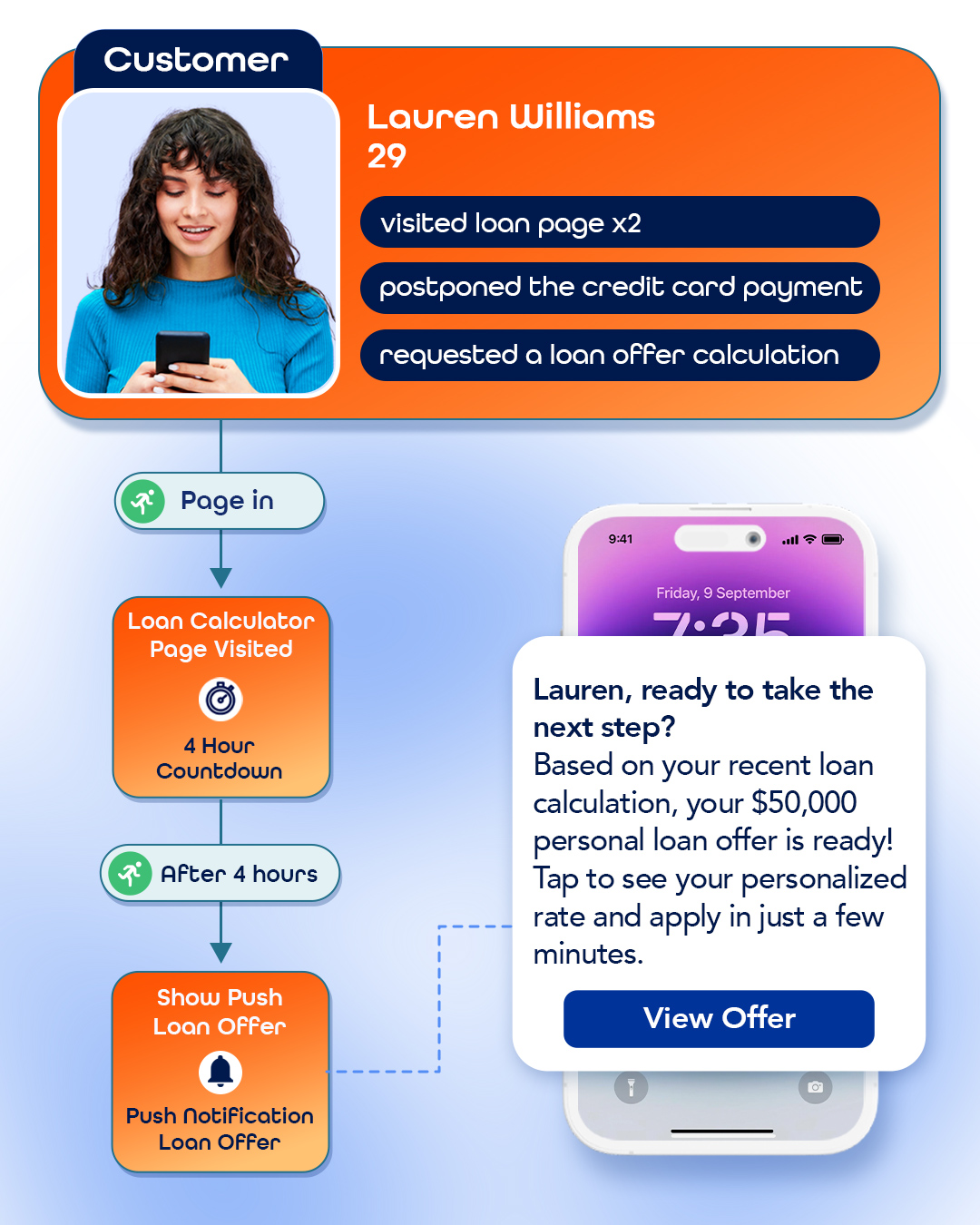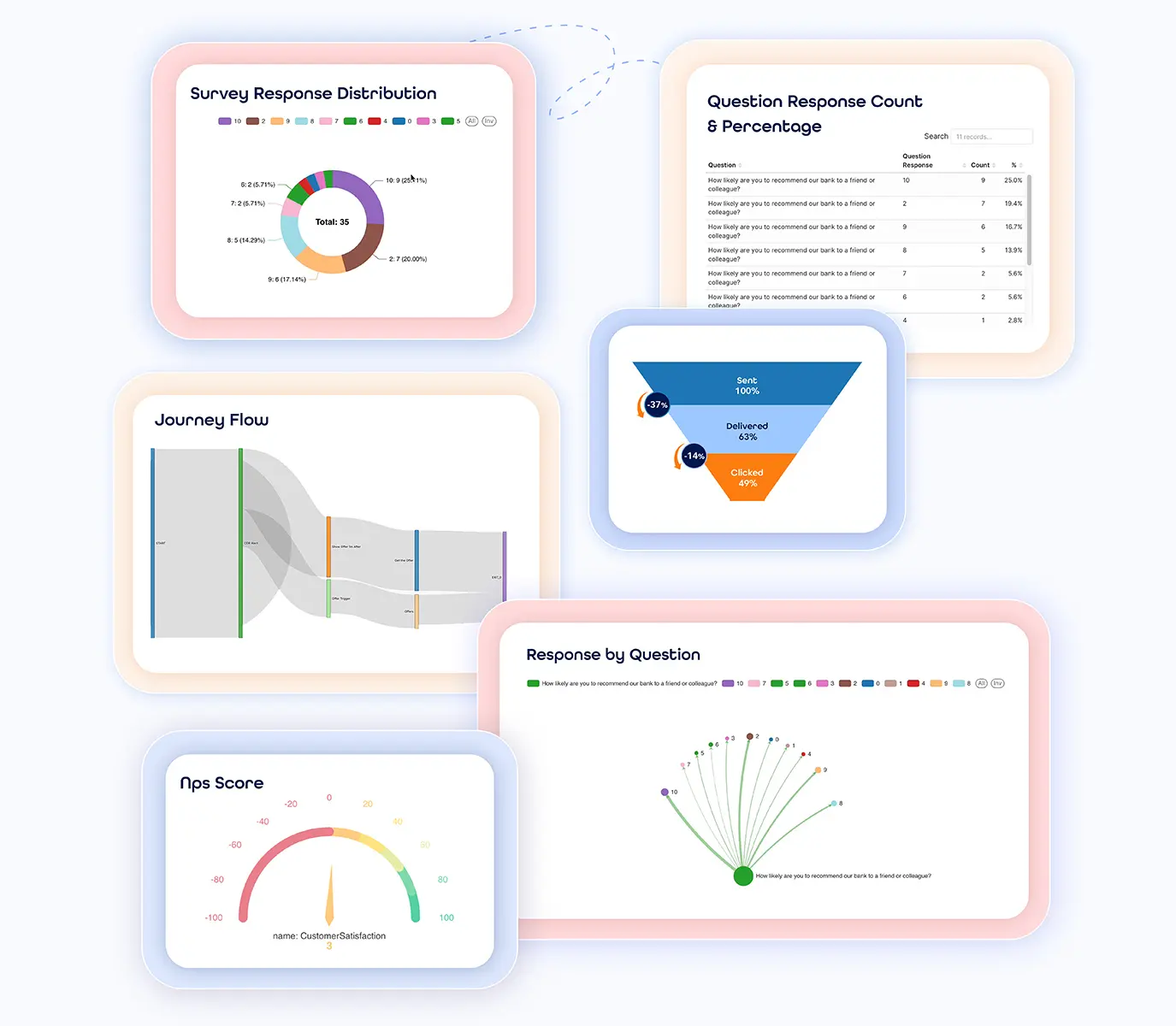Behavioral Analytics
Behavioral analytics is the process of collecting and analyzing data on how users interact with digital channels, such as what they click, view, search for, or abandon to uncover patterns, preferences, and intent.
It goes beyond surface-level metrics like pageviews, click-through rates, or open rates to reveal why users behave the way they do.

Why is Behavioral Analytics Important?
In modern marketing, behavioral analytics is essential for understanding the full customer journey. Here are some key benefits customer behavior analytics provides businesses:
1. Smarter Audience Segments
Behavioral analytics empowers businesses to group users not just based on demographics, but on actions, patterns, and intent. This contextual segmentation allows for targeting to be more relevant and campaigns more effective.
2. Faster & Data-Driven Decisions
Real-time behavioral insights give marketing teams the clarity they need to move quickly and confidently. From creative choices to campaign timing, product prioritization, and even customer service interventions, behavioral data helps every team align around what’s actually working.
3. Optimized Customer Journeys
Behavioral analytics connects signals across several touchpoints, such as a website, mobile app, email, and various marketing channels, to reveal where to improve UX, reduce friction, or reinforce momentum.
4. Personalized Experiences at Scale
By recognizing behavioral patterns in real time, businesses can dynamically tailor messaging, offers, and experiences to each user across all marketing channels.
5. Predicting Future Behavior with AI
Behavioral data fuels predictive models that estimate outcomes like likelihood to purchase, churn risk, or engagement drop-off so that businesses can act before it happens.
Use Cases by Industry
Here’s how different industries leverage user behavior analytics to personalize experiences, reduce churn, and drive growth:
1. Retail & E-Commerce
Retail companies can track browsing behavior, cart activity, and purchase patterns to identify high-intent shoppers and personalize product recommendations. For example, a user who frequently views eco-friendly products but hasn’t purchased anything yet may be served a limited-time discount on sustainable items, nudging them to convert.
2. Fintech
Fintech companies can detect behavioral patterns which indicate financial milestones, fraud risks, or engagement drop-offs. For example, a user who stops checking their balance or hasn’t opened the app in weeks might trigger an in-app message promoting a new budgeting tool or personalized goal reminder.
3. Telecom
Telecom companies can leverage behavior analytic solutions to monitor feature usage, plan comparisons, and support interactions to flag churn risk, as well as cross-sell and upsell opportunities. For example, if a customer reduces their data usage and starts exploring cheaper plans, behavioral signals can trigger a retention offer or proactive outreach.
4. Travel & Hospitality
Companies in the travel & hospitality industry can analyze search filters, itinerary views, and booking steps to deliver relevant offers based on trip intent and timing. For example, a traveler browsing destinations in July with flexible dates could receive dynamic pricing alerts or bundled hotel recommendations based on their behavior.
The Challenges of Implementing Behavioral Analytics
While behavioral analytics offers tremendous potential, it’s not without its challenges. Here are the key obstacles marketers face when implementing and deriving value from behavioral data, and how to overcome them:
1. Data Overload
With the vast amounts of customer behavior data generated across multiple channels, it’s easy to fall into the trap of tracking everything without focusing on what matters. Businesses should prioritize key insights that align with their goals and streamline their tracking in order to reduce noise.
2. Lack of Context
Behavioral signals can be noisy if not interpreted with the right context, whether it’s user lifecycle stage, intent, or external factors like seasonality. Businesses must combine behavioral data with contextual information such as user profiles, past interactions, and demographic details to get a more complete picture.
3. Real-Time Capabilities
Many businesses collect behavioral data, but the real value comes from acting on it in real time. Waiting too long to respond can lead to missed opportunities or irrelevant messaging. Leverage marketing platforms with real-time behavioral analytics and decision engines to trigger personalized actions immediately.
4. Complexity of Predictive Models
While predictive behavioral analytics can forecast future actions, building and maintaining accurate models is complex and requires high-quality data. Invest in AI and machine learning tools that continuously improve as they ingest more data. With enough historical behavior data, predictive models can become more reliable, giving businesses a clearer picture of future user actions.
5. Privacy & Compliance Concerns
The collection of user behavior data must comply with regulations like GDPR, CCPA, and others. Ensuring that user privacy is respected while leveraging this data for business insights is a delicate balance. Adopt a privacy-first approach, anonymize sensitive data, and stay up to date with compliance regulations. Transparency with users about data collection and usage builds trust while minimizing risk.
evamX: Leveraging Behavioral Analytics for Smarter Customer Engagement
Behavioral analytics has the potential to transform your marketing strategy, but it’s only valuable if you can act on it in real time and with precision. That’s where evamX comes in.
The AI-powered, omnichannel marketing platform collects, analyzes, and acts on behavioral data in real time so that businesses can personalize experiences across web, email, social media, mobile app, and more.

Whether you’re a business operating in the retail, fintech, travel, or telecom industry, evamX can help you:
- Break through data overload by focusing on the insights that matter most.
- Interpret behavioral data in the context of user intent, lifecycle, and external factors.
- Trigger real-time, personalized actions that drive engagement and conversions.
- Build predictive models that evolve with your audience and improve over time.
- Ensure compliance with data privacy regulations without missing a beat.
Ready to put behavioral analytics to work for your business?
Request a demo or contact us to learn how evamX can help you make smarter decisions and deliver more relevant experiences across all channels.
Join the Evam Community
Subscribe to receive the latest insights, news, and updates straight to your inbox.


